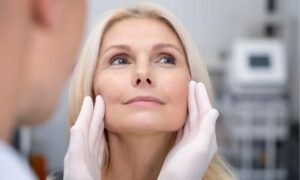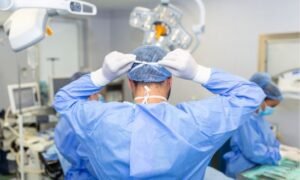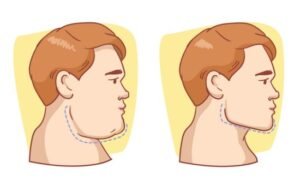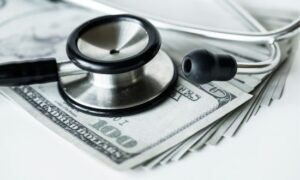Buccal fat removal is also known as cheek reduction surgery. It is a cosmetic procedure aimed at reducing the volume of fat in the cheeks to achieve a more sculpted facial appearance. This procedure involves the removal of buccal fat pads which are located in the lower part of the cheeks. The photos of Buccal Fat Extraction before and after in the article will clearly show you how the cheeks become less puffy and the face looks more even.
What is Buccal Fat Removal?
Buccal fat removal is a cosmetic surgery procedure. It aims to reduce chubby cheeks and create a more defined facial contour. The procedure involves removing buccal fat pads located in the cheeks. It helps in achieving a more sculpted facial appearance. People seek it for a more defined cheekbone structure and facial symmetry.
Why People Opt for Buccal Fat Removal?
Individuals may consider buccal fat removal for various reasons. Primarily it is for aesthetic purposes to achieve a slimmer facial appearance. Some of the common reasons include:
- Desire for a more defined cheekbone structure
- Reduction of overly round or chubby cheeks
- Enhancement of facial symmetry and balance.
Buccal Fat Removal Procedure
The Buccal fat removal is a cosmetic surgery aimed at reducing the size of the buccal fat pads in the cheeks to create a more contoured and defined facial appearance. Here’s a breakdown of the buccal fat removal procedure into three steps: pre-procedure, procedure and post-procedure.
How Buccal Fat Procedure is Planned?
Before the surgery, the patient undergoes a consultation with a qualified surgeon. During this consultation, the surgeon discusses the patient’s goals, examines their facial structure and assesses their overall health to determine if they’re a suitable candidate for the procedure. This phase involve following steps:
Pre-Procedure:
1. Consultation with the Surgeon:
- Assessment: The patient meets the surgeon for an initial consultation. The surgeon evaluates the patient’s facial structure, discusses their goals, and assesses their overall health.
- Discussing Expectations: Patients explain their desired outcome, and the surgeon explains what buccal fat removal can achieve and any limitations.
- Medical History: The surgeon reviews the patient’s medical history to ensure they’re fit for the procedure.
2. Preparation for Surgery:
- Medical Tests: Some patients might need to undergo specific medical tests, such as blood tests or imaging, to ensure they’re suitable candidates.
- Instructions: Patients receive detailed instructions on how to prepare for the surgery, including restrictions on eating or drinking before the procedure and guidance on medications.
How Buccal Fat Removal is done?
This procedure is typically performed on an outpatient basis and involves following steps:
Procedure:
- Anesthesia:
On the day of the surgery, the patient is given either local anesthesia with sedation or general anesthesia, depending on the surgeon’s recommendation and patient preference.
- Incisions and Fat Removal:
The surgeon makes small incisions on the insides of the cheeks, typically near the molars, to access the buccal fat pads. Through these incisions, the surgeon carefully locates and removes a portion of the buccal fat pads, aiming for the desired facial contour.
- Closure:
After the fat removal, the incisions are closed with dissolvable sutures, ensuring there are no visible stitches post-surgery.
What happens after Buccal Fat Removal treatment?
Following the procedure, patients are monitored in a recovery area to ensure they wake up safely from anesthesia. They are given post-operative instructions regarding diet, medications, oral hygiene and follow-up appointments. Detail insight of the post procedure steps are as follows:
Post- Procedure:
a. Recovery and Post-Op Care:
- Monitoring: Patients are monitored in a recovery area to ensure they wake up safely from anesthesia.
- Instructions: Detailed post-operative instructions are provided. It covers topics such as diet, medications, oral hygiene and follow-up appointments.
- Managing Discomfort: Patients initially might experience mild discomfort, swelling, or bruising. For which they’re prescribed pain medication.
b. Healing Process:
- Swelling and Recovery: Over the next few days to weeks, swelling subsides gradually. It will reveal the reshaped facial contours.
- Follow-Up Appointments: Patients schedule follow-up appointments with the surgeon to monitor the healing process and ensure everything is progressing well.
c. Long-Term Recovery:
- Final Results: Full recovery and final results may take several weeks to months as the swelling completely dissipates and the face settles into its new contours.
- Careful Monitoring: Patients continue to follow the surgeon’s recommendations for post-operative care and attend scheduled follow-up appointments for a successful recovery.
Who are the candidates for Buccal Fat Removal Surgery?
- Individuals with Chubby Cheeks: People bothered by excessively round or chubby cheeks might consider buccal fat removal to achieve a more sculpted facial appearance.
- Desire for Facial Contouring: Those seeking a more defined cheekbone structure or a slimmer facial contour could be suitable candidates for this surgery.
- Good Physical Health: Candidates should generally be in good physical health to undergo the procedure safely.
- Realistic Expectations: Those with realistic expectations about the outcome of the surgery and understand that it aims to enhance facial features rather than drastically change their appearance.
What are the benefits of Buccal Fat Removal surgery?
- It creates prominent and defined cheekbones for a slimmer look.
- It reduces excess cheek fullness for better facial symmetry.
- It is a minimally invasive procedure.
- When performed by a skilled surgeon, it’s safe and offers lasting results.
- It helps in achieving a more youthful look.
- Looking at the pictures of Buccal Fat Extraction before and after, we can see how the face becomes more balanced and less chubby.
Buccal Fat Extraction Before and After
It’s important to note that individual results of buccal fat extraction before and after changes may vary based on factors such as the amount of fat removed, facial anatomy and the body’s healing process. Patients should discuss their expectations with the surgeon and have a clear understanding of what can be achieved through buccal fat removal. However, an overview of the expected buccal fat extraction before and after changes are:
Before Buccal Fat Removal:
1. Facial Appearance:
- Round or chubby cheeks with excess fat in the lower part of the face.
- Lack of definition in cheekbones and facial contours.
2. Aesthetic Concerns:
- Desire for a slimmer and more sculpted facial appearance.
- Wanting to achieve more prominent cheekbones and a defined jawline.
3. Consultation:
- Meeting with a qualified surgeon to discuss goals, assess suitability for the procedure, and understand the expected outcomes.
- Reviewing pre-operative instructions and understanding the surgery process.
After Buccal Fat Extraction:
When we see the Buccal Fat Extraction before and after images, we notice the cheeks becoming less round and the cheekbones getting more defined.
1. Facial Changes:
- Reduction in cheek fullness and a slimmer appearance in the lower face.
- More defined cheekbones and improved facial contours.
2. Improved Symmetry:
- Better facial balance and symmetry due to reduced volume in the cheeks.
- Enhances overall facial harmony and proportions.
3. Aesthetic Results:
- Achieving the desired facial appearance with a more sculpted and defined look.
- Enhanced self-confidence and satisfaction with the newly shaped face.
4. Recovery Period:
- Initial swelling and discomfort in the days following the surgery.
- Gradual reduction in swelling over a few weeks to reveal final results.
5. Follow-Up Care:
- Attending follow-up appointments with the surgeon to monitor healing and address any concerns.
- Following post-operative instructions for optimal recovery and results.
Buccal Fat Removal Cost
The buccal fat removal cost can vary significantly based on various factors such as:
- Surgeon’s Expertise: Buccal fat removal cost may differ depending on the experience and reputation of the surgeon performing the procedure.
- Location: Buccal fat removal cost can vary based on the geographical location and the standard of living in that area.
- Facility Fees: Fees associated with the surgical facility where the procedure is performed.
- Anesthesia Charges: Buccal fat removal cost can vary for the type of anesthesia used during the surgery.
- Pre-Operative Tests: Expenses for any required medical tests or evaluations before the surgery.
- Post-Operative Care: Costs related to follow-up appointments, medications, and any additional care needed after the surgery.
On average, buccal fat removal cost in the United States can range from several hundred to a few thousand dollars. It averages 2880$ according to American Society of Plastic Surgeons.
Risks of Surgery
The procedure is generally safe ad carry minimum risks. Some of the risks associated with buccal fat removal surgery are:
- Infection: Chance of mouth-area infection post-surgery.
- Bleeding: Some bleeding during or after the procedure.
- Nerve Damage: Rare risk of temporary or permanent numbness in cheeks.
- Over-Removal of Fat: Too much removal may lead to a hollow look.
- Asymmetry: Possibility of uneven results between cheeks.
- Scarring: Minimal risk of scarring inside the mouth.
- Unsatisfactory Results: Expectations might not match actual results.
- Anesthesia Risks: General anesthesia carries its own set of risks.
- Long-Term Effects: Rare long-term issues like persistent numbness.
Discussing these risks with a surgeon beforehand and following post-operative instructions can help minimize these potential complications.
For any further query feel free to contact us at https://medicalinquiries.com/contact-us/
The Bottom Line
Buccal fat removal surgery is a procedure aimed at slimming the face and enhancing facial contours. For a successful outcome of the procedure you must discuss your expectations with a qualified surgeon. Thorough understanding of the procedure’s risks and benefits, and following post-operative care are vital for a successful outcome. To sum up, Buccal Fat Extraction Before and After highlights a procedure that shapes the face by reducing cheek fullness.
Disclaimer
Content on this site is written with thorough research and keeping in mind the latest guidelines. However, no content on this site should substitute professional consultation.
